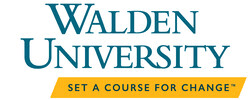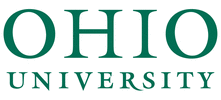Last Updated: June 2025 | Reviewed by Accounting Professional
Accounting theory and practice form the foundational pillars of modern financial management, shaping how organizations measure performance, allocate resources, and communicate value to stakeholders. This comprehensive guide examines the essential theoretical frameworks, practical applications, and career opportunities within the accounting profession, drawing on insights from certified public accountants, regulatory standards, and current industry practices.
The accounting profession continues to evolve rapidly, driven by technological innovation, regulatory changes, and expanding stakeholder expectations. According to the Bureau of Labor Statistics, employment of accountants and auditors is projected to grow 6% from 2023 to 2033, creating more than 91,000 jobs in the field during this time. This sustained demand reflects the critical role accounting professionals play in ensuring financial integrity and supporting strategic decision-making across all economic sectors.
In today’s data-driven economy, accounting professionals who master both theoretical foundations and practical applications position themselves as indispensable strategic partners, translating complex financial information into actionable business insights.
Understanding Accounting Theory: The Conceptual Foundation
Accounting theory provides the intellectual framework that guides financial reporting practices and professional judgment. Developed through decades of academic research and practical refinement, these theoretical constructs ensure consistency, comparability, and reliability in financial communication.
The Financial Accounting Standards Board (FASB) defines accounting theory as the coherent system of interrelated objectives and fundamentals that prescribe the nature, function, and limits of financial accounting and reporting. This framework addresses critical questions about measurement, recognition, and disclosure of financial information.
The Conceptual Framework: Building Blocks of Financial Reporting
The conceptual framework serves as the foundation for all accounting standards and practices. This framework consists of several interconnected elements:
Core Accounting Principles: Theory in Action
Understanding how theoretical principles translate into daily practice is essential for accounting professionals. These principles, established by the American Institute of CPAs (AICPA) and international standard-setters, guide decision-making in complex financial scenarios.
The Matching Principle: A Case Study Approach
Case Study: TechStartup Inc.
TechStartup Inc., a software development company, faces a common challenge in applying the matching principle. In January 2024, they incurred $500,000 in development costs for a product that will generate revenue over three years. Following the matching principle, their accounting team must allocate these costs proportionally to match revenue recognition.
Solution Applied: The company’s CFO, working with the accounting team, established a systematic allocation method based on projected revenue patterns. They recognized 40% of costs in Year 1 ($200,000), 35% in Year 2 ($175,000), and 25% in Year 3 ($125,000), aligning expense recognition with anticipated revenue streams.
Revenue Recognition: The Five-Step Model
The implementation of ASC 606 and IFRS 15 revolutionized revenue recognition practices. Here’s how companies apply the five-step model in practice:
Contemporary Challenges: Where Accounting Theory Meets Modern Practice
Today’s accounting professionals navigate unprecedented challenges that test both theoretical knowledge and practical skills. These challenges reflect fundamental shifts in business models, technology adoption, and stakeholder expectations.
Digital Asset Accounting: Emerging Frameworks
The rise of cryptocurrencies and digital assets has challenged traditional accounting frameworks. The FASB’s recent guidance on digital asset accounting illustrates how theory evolves to address new economic realities:
Practical Example: A technology company holding Bitcoin as treasury assets must now measure these holdings at fair value, with changes recognized in net income. This departure from traditional intangible asset accounting reflects the unique characteristics of digital assets and their active markets.
ESG Reporting: Expanding the Accounting Paradigm
Environmental, Social, and Governance (ESG) reporting represents a significant expansion of accounting’s traditional boundaries. Leading companies now integrate ESG metrics into their financial reporting frameworks, requiring new measurement approaches and disclosure practices.
Industry Application: Manufacturing companies implementing carbon accounting systems must develop methodologies for measuring emissions across their value chains, translating physical measurements into financial impacts for stakeholder reporting.
Technology Integration: Transforming Accounting Theory and Practice
The integration of advanced technologies fundamentally reshapes how accounting theory translates into practice. Understanding these technological impacts is crucial for career success in modern accounting.
Artificial Intelligence in Accounting
AI applications in accounting extend beyond simple automation to complex judgment areas:
Blockchain and Distributed Ledgers
Blockchain technology promises to revolutionize transaction verification and recording. Major accounting firms are piloting blockchain applications for:
- Real-time audit trails
- Automated reconciliation processes
- Smart contract execution and accounting
- Cross-border transaction transparency
Career Pathways: From Theory to Professional Success
The accounting profession offers diverse career trajectories, each requiring different combinations of theoretical knowledge and practical skills. Understanding these pathways helps aspiring professionals make informed educational and career decisions.
Educational Foundation
Building a successful accounting career begins with appropriate educational preparation. The typical progression includes:
Undergraduate Education: A bachelor’s degree in accounting provides comprehensive coverage of fundamental principles. Core coursework includes:
- Financial Accounting (Intermediate and Advanced)
- Cost and Managerial Accounting
- Taxation (Individual and Corporate)
- Auditing and Assurance Services
- Accounting Information Systems
- Business Law and Ethics
Graduate Studies: Many professionals pursue a Master of Accountancy (MAcc) to meet the 150-hour requirement for CPA licensure and deepen specialized knowledge.
Professional Certifications and Specializations
Professional certifications validate expertise and open advancement opportunities:
Compensation Analysis: Regional and Experience-Based Variations
Understanding compensation patterns helps professionals plan career trajectories and negotiate effectively. Based on current Bureau of Labor Statistics data, accounting salaries vary significantly by location, experience, and specialization.
National Salary Overview
Geographic Variations
Metropolitan areas with the highest accounting salaries include:
- San Francisco-Oakland-Berkeley, CA: Median $89,450 (48% above national median)
- New York-Newark-Jersey City, NY-NJ: Median $87,320 (45% above national median)
- Washington-Arlington-Alexandria, DC-VA: Median $85,680 (42% above national median)
- Boston-Cambridge-Nashua, MA-NH: Median $82,450 (37% above national median)
- Los Angeles-Long Beach-Anaheim, CA: Median $79,880 (33% above national median)
Practical Applications: Bridging Theory and Practice
Success in accounting requires seamlessly integrating theoretical knowledge with practical application. Here are proven strategies used by experienced professionals:
Decision-Making Framework
When faced with complex accounting decisions, professionals use structured approaches:
Example Scenario: Lease Classification Under ASC 842
A retail company must classify a 5-year equipment lease with specific terms:
- Annual payments: $100,000
- Equipment fair value: $425,000
- Useful life: 7 years
- No transfer of ownership
- No purchase option
Application Process:
- Calculate present value of lease payments: $379,000
- Compare to fair value threshold (90%): $382,500
- Evaluate economic life test: 5/7 years = 71%
- Conclusion: Operating lease (fails both tests)
- Implementation: Right-of-use asset and lease liability recognition
Common Pitfalls and Solutions
Future Outlook: Preparing for Tomorrow’s Challenges
The accounting profession stands at a critical juncture, with emerging technologies and evolving stakeholder expectations reshaping traditional practices. Professionals who anticipate and adapt to these changes position themselves for long-term success.
Emerging Trends and Opportunities
1. Integrated Reporting Evolution: The convergence of financial and non-financial reporting continues to accelerate. The International Integrated Reporting Council (IIRC) framework gains adoption as stakeholders demand comprehensive value creation narratives.
2. Continuous Auditing and Assurance: Real-time data access enables continuous monitoring and assurance services, transforming traditional periodic audit approaches.
3. Predictive Analytics Integration: Advanced analytics tools enable accountants to shift from historical reporting to predictive insights, enhancing strategic advisory capabilities.
Skills Development Priorities
Tomorrow’s accounting leaders must cultivate diverse competencies:
- Technical Skills: Data analytics, information systems, and emerging technology platforms
- Soft Skills: Communication, critical thinking, and stakeholder management
- Industry Knowledge: Sector-specific regulations and business models
- Ethical Leadership: Navigate complex ethical considerations in evolving landscapes
Continuing Professional Development
The dynamic nature of accounting requires commitment to lifelong learning. Successful professionals engage in continuous development through:
Formal Education: Continuing Professional Education (CPE) requirements ensure professionals stay current with evolving standards and practices. Most states require 40 hours annually for CPA license maintenance.
Professional Networks: Active participation in professional organizations like the AICPA, IMA, and state CPA societies provides access to resources, networking opportunities, and specialized training.
Industry Specialization: Developing expertise in specific industries or technical areas creates differentiation and advancement opportunities. Popular specializations include:
- Healthcare accounting and reimbursement
- Financial services and banking regulations
- Technology and software revenue recognition
- Non-profit accounting and compliance
- International tax and transfer pricing
Conclusion: Integrating Accounting Theory and Practice for Professional Excellence
Mastering both accounting theory and practice creates a foundation for meaningful professional contributions and career advancement. As the profession evolves, those who understand fundamental principles while embracing practical innovation will find abundant opportunities to create value for organizations and society.
The journey from accounting student to seasoned professional requires dedication to both conceptual understanding and practical application. By grounding technical skills in solid theoretical frameworks, accountants develop the judgment and adaptability needed to navigate complex business environments and emerging challenges.
Whether pursuing public accounting, corporate finance, government service, or entrepreneurial ventures, accounting professionals who integrate theory with practice position themselves as trusted advisors and strategic partners. The profession’s blend of technical rigor, ethical responsibility, and business acumen offers a rewarding career path for those committed to excellence in financial stewardship and organizational success.
May 2024 Bureau of Labor Statistics salary data for Accountants and Auditors reflect state and national data, not school-specific information. Conditions in your area may vary. Data accessed June 2025.








